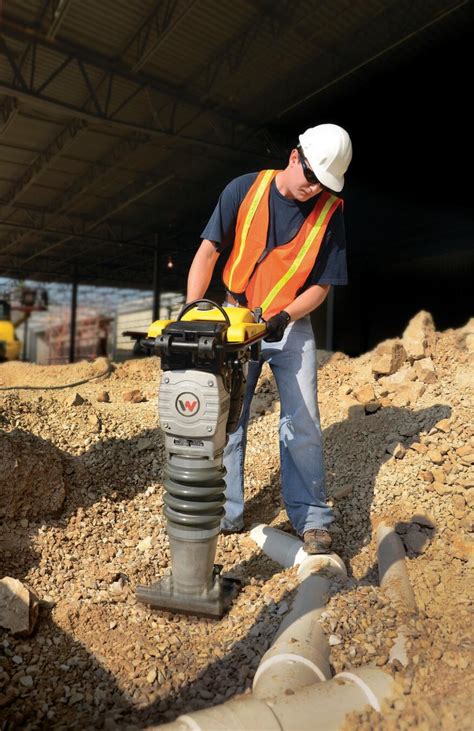compacting soil with excavator Learn about different types of soil compaction equipment, such as rammers, vibratory compactors, rollers and more. Find out how to select the right equipment for your project based on the type of soil, area and force required. With a range of ‘micro digger hire’ options and a Click & Collect service that’s ready in an industry-leading 15 minutes, Jewson makes it easier to plan your workload without worrying about tool availability.
0 · Soil Compaction Equipment
1 · Soil Compaction
2 · How to Compact Soil After Excavation: Your Step
3 · Different Types of Soil Compaction Equipment: Types of Rollers
Our fleet of mini diggers and excavators is an enormous one, so we can hire out the machine for your needs, no matter whether you're looking for hole digging, drilling, or even concrete demolition. We also offer a lower price than our competition, even when vat is taken into account.
Learn about different types of rollers and other soil compaction equipments for various soil types and moisture conditions. Find out how rammers, vibrating plate compactors, vibro tampers, smooth wheeled rollers, sheepsfoot rollers and pneumatic tyred rollers work.Learn about different types of rollers and other soil compaction equipments for various soil types and moisture conditions. Find out how rammers, vibrating plate compactors, vibro tampers, smooth wheeled rollers, sheepsfoot rollers and pneumatic tyred rollers work. Compaction after excavation is the process of pressing down loosened soil to eliminate air pockets and increase soil density. This ensures that the ground can support structures and prevents future issues like settling, erosion, or water pooling.The following steps outline the general process for compacting soil in these projects: Excavation: Remove any topsoil, vegetation, or debris to expose the subgrade soil. The depth of excavation depends on the thickness of the paving material and the required sub-base and base layers.
Soil Compaction Equipment
Soil Compaction
Learn about different types of soil compaction equipment, such as rammers, vibratory compactors, rollers and more. Find out how to select the right equipment for your project based on the type of soil, area and force required. A compactor is a device that compresses dirt, soil or gravel to create a stable surface for construction or landscaping. Learn about 15 types of compactors, such as rammers, plates and rollers, and how to choose the right one for your project.
Learn how to choose the right equipment for different types of soils and job sites. Compare rammers, plate compactors, and trench rollers based on soil characteristics, size, and vibration.
There are three types of compaction equipment: static, vibratory, and impact, points out Hoffman. Static rollers come in three-wheeled, tandem, or pneumatic-tired designs and rely on the weight of the drum and machine to compact material. They work best for compacting thin layers of soil or asphalt.
Learn about four primary types of compaction equipment: smooth drum, padfoot, tandem and combination rollers. Each type has unique features and applications for different soil types and.There are three main categories of plate compactors: a single plate compactor, a reversible plate compactor, and a high performance/heavy-duty plate compactor. Single plate compactors go in a forward direction only, and are probably the most popular choice for smaller asphalt jobs. Soil compaction is a fundamental aspect of construction and landscaping projects, requiring precise techniques and dependable equipment. Our comprehensive guide has provided the insights you need to master soil compaction, from equipment selection to best practices and expert tips for success.
Learn about different types of rollers and other soil compaction equipments for various soil types and moisture conditions. Find out how rammers, vibrating plate compactors, vibro tampers, smooth wheeled rollers, sheepsfoot rollers and pneumatic tyred rollers work.
Compaction after excavation is the process of pressing down loosened soil to eliminate air pockets and increase soil density. This ensures that the ground can support structures and prevents future issues like settling, erosion, or water pooling.The following steps outline the general process for compacting soil in these projects: Excavation: Remove any topsoil, vegetation, or debris to expose the subgrade soil. The depth of excavation depends on the thickness of the paving material and the required sub-base and base layers. Learn about different types of soil compaction equipment, such as rammers, vibratory compactors, rollers and more. Find out how to select the right equipment for your project based on the type of soil, area and force required. A compactor is a device that compresses dirt, soil or gravel to create a stable surface for construction or landscaping. Learn about 15 types of compactors, such as rammers, plates and rollers, and how to choose the right one for your project.
Learn how to choose the right equipment for different types of soils and job sites. Compare rammers, plate compactors, and trench rollers based on soil characteristics, size, and vibration. There are three types of compaction equipment: static, vibratory, and impact, points out Hoffman. Static rollers come in three-wheeled, tandem, or pneumatic-tired designs and rely on the weight of the drum and machine to compact material. They work best for compacting thin layers of soil or asphalt. Learn about four primary types of compaction equipment: smooth drum, padfoot, tandem and combination rollers. Each type has unique features and applications for different soil types and.
How to Compact Soil After Excavation: Your Step
There are three main categories of plate compactors: a single plate compactor, a reversible plate compactor, and a high performance/heavy-duty plate compactor. Single plate compactors go in a forward direction only, and are probably the most popular choice for smaller asphalt jobs.

In today’s article, we will take you through everything you need to know about the cost to hire a mini digger in 2021. From the costings to requirements and everything in between, you will find it here. A mini digger can cost between .
compacting soil with excavator|How to Compact Soil After Excavation: Your Step